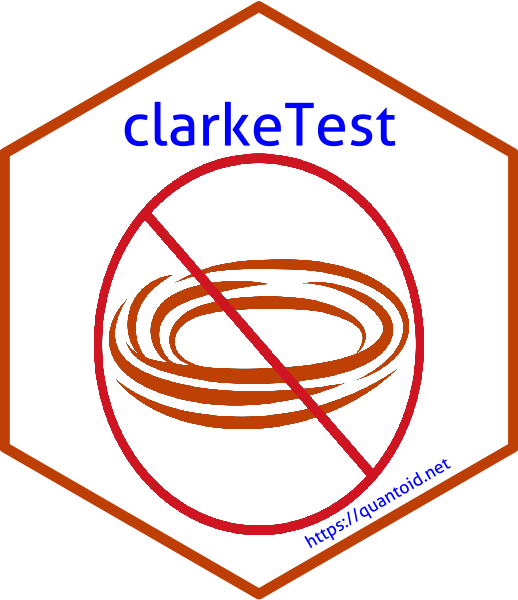

ClarkeTest makes doing tests of non-nested models easy and clear. The
main testing function currently supports models of class
lm, glm (binomial, poisson and negative
binomial), polr, clm, multinom,
mlogit.
The initial code came from the games package
which worked with strategic game models as well as binomial GLMs and
linear models. The impetus for making this package was to extend the
classes of models that could be evaluated.
I re-wrote the function to call generic functions for the individual
log-likelihoods and the number of model parameters. This makes it easy
for others to extend the functionality by writing
indivLogLiks and nparams methods for a new
model class.
indivLogLiks function should take the model object
as its only argument and return a vector of the individual
log-likelihoods for each observation in the estimation sample. Here is
an example for objects of class clm.indivLogLiks.clm <- function(model){
probs <- predict(model, type="prob")$fit
ans <- log(probs)
return(ans)
}nparams function should take the model object as
its only argument and return a scalar that gives the number of
parameters in the model. Here is an example for models of class
clm.nparams.clm <- function(model){
length(coef(model))
}nobs() generic to
find the number of observations. If there is no nobs()
method for the current model class, the user would have to write one of
those, too. Here is an example of the nobs method for
mlogit objects.nobs.mlogit <- function(object, ...){
length(object$fitted.values)
}# Install release version from CRAN
install.packages("clarkeTest")
# Install development version from GitHub
remotes::install_github("davidaarmstrong/ClarkeTest")Here is an example of how the function works:
library(clarkeTest)
data(conflictData)
lm1 <- lm(riots ~ log(rgdpna_pc) + log(pop*1000) +
polity2, data=conflictData)
lm2 <- lm(riots ~ rgdpna_pc + pop +
polity2, data=conflictData)
clarke_test(lm1, lm2)
#>
#> Clarke test for non-nested models
#>
#> Model 1 log-likelihood: -8446
#> Model 2 log-likelihood: -8433
#> Observations: 4381
#> Test statistic: 1830 (42%)
#>
#> Model 2 is preferred (p < 2e-16)